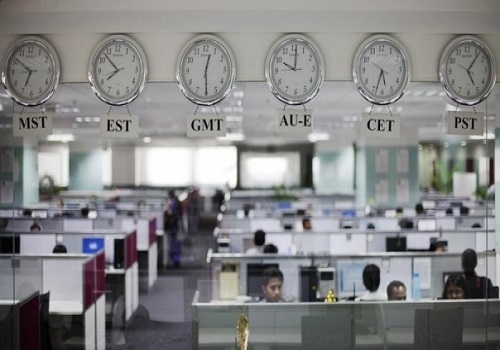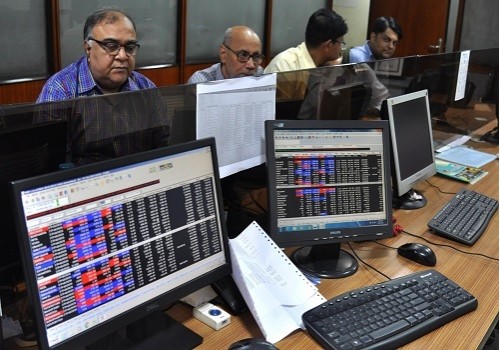Weekly View Fixed Income Markets by Puneet Pal, Head-Fixed Income, PGIM India Mutual Fund

Follow us Now on Telegram ! Get daily 10 - 12 important updates on Business, Finance and Investment. Join our Telegram Channel
Below the Weekly View on Fixed Income Markets by Puneet Pal, Head-Fixed Income, PGIM India Mutual Fund
The surge in US bond yields is due to the fear that the fiscal deficit in the US will continue to remain elevated and higher yield levels in the world’s biggest economy can have repercussions on Emerging Markets. Though there are signs of softness in the US jobs market, currently the bond market is ignoring that and focussing on the expected fiscal policies after the presidential elections. We expect the US Fed to continue with its rate cutting cycle with a 25bps rate cut next week on Nov 7th though the rate cutting cycle is likely to be on a slow and gradual path going forward. Indian bonds remain attractive on the back of strong and stable underlying macro-economic variables with favourable demand supply dynamics at play. The scope for rate cuts in India is on account of high real positive rates and the need to encourage private investment and we expect the rate cutting cycle in India may start from Feb 2025.
Bond yields tend to move in advance of rate action and investors can look to increase allocation to Fixed Income at every uptick in yields. We expect long bond yields to continue to drift lower over the next couple of quarters on the back of positive demand supply dynamics. We expect the benchmark 10yr bond yield to gradually drift lower towards 6.50% by Q4 of FY25.
Investors with medium to long term investment horizon can look at Dynamic Bond Funds having duration of 6-7yrs, with predominant sovereign holdings as they offer a better risk- reward currently. Investors having an investment horizon of 6-12 months can consider Money Market Funds as yields are attractive in the 1yr segment of the curve also.
Indian bonds remained under pressure on surging bond yields in US and other DM countries. The benchmark 10yr bond yield ended the week and the month at 6.85%, unchanged from last week’s closing as volumes remained thin in a holiday curtailed week.
Consumption seems to be slowing both in urban and rural areas as the growth rates for daily household products and groceries may have halved by volume. According to some estimates, volume growth in the FMCG market increased by 4.10% in the quarter ended September, down from the 7.20% growth recorded in the September quarter last year though the GST revenue for the month of October (for transaction done in September) was the second highest ever at INR 1.87 lac cr. The YOY increase was 8.90%. So far in this fiscal, the YOY growth in GST revenues has been coming lower with the month of September (for transaction in the month of August) recording a growth of 6.50%, compared to the growth of 13.60% in the month of May. While various factors, ranging from slowdown in government expenditure during election, incessant rains and higher food inflation are being attributed to this slowing trend, one has to wait and see how it pans out after the festival season. The festival push resulted in retail auto sales recording a growth of 26% in a boost for auto makers in a tough year so far. Despite the growth in auto sales recorded this month, the growth in the fiscal year so far (Apr-Oct) is only at 5%. Buoyed by the festival season, UPI transactions also rose by 45% on a YOY basis. For the first time in the history of the Indian Jewellery market, sales of silver outshone that of Gold. While silver sales were up by 30-35%, sales of gold were down 15% compared to last year during the festive season. Amidst lingering concerns on food inflation, rice stockpile with Food corporation of India (FCI) touched 300 lac tonnes, highest in almost 20yrs. The Finance Ministry’s monthly economic review gave a positive outlook for the economy underpinned by a stable external sector, positive agriculture scenario and expected improvement in demand supported by the festival season but cautioned that demand conditions in the economy needs monitoring, especially urban demand slowdown. The RBI governor, in an interaction, said that there were mixed signals about demand and positives outweigh negatives.
The Central Government’s fiscal deficit in the first half of FY25 came in at 29.40% compared to 39.30% for the same period last year as government spending lagged. The core sector growth rose 2% in September from 1.60% in August continuing the trend of slower growth. The August print was the lowest in 42 months and if one excludes the August number.
RBI continues to bring back its gold holdings back into the country as it brought back another 102 tonnes of Gold from the vaults of Bank of England. Out of the 855 tonnes of Gold held by RBI at the end of September, 510 tonnes of gold is held domestically, the latest report on management of foreign exchange reserves revealed. Since September 2022, RBI has brought home 214 tonnes of gold amidst heightened geopolitical tensions across the globe. RBI has also been increasing its gold holdings and as of end of September 2024. Gold accounted for 9.3% of RBI’s foreign exchange reserves compared with 8.1% as of end of march 2024.
The net International Investment Position (IIP) of India improved as India’s external assets grew faster than its liabilities between June 2023 and June 2024. India’s external assets grew by USD 108.4bn while liabilities grew by USD 97.7bn, from June 2023 to June2024. The net IIP of India at the end of June 2024 remained negative at USD -368.3 bn but has improved from the June 2023 figure of negative USD -379 bn.
RBI continued to intervene in the FX markets and INR remained under pressure on the back of FPI outflows as it touched an all-time low of 84.10 (intraday) before closing the week and the month at 84.08, broadly unchanged from last week's closing. October also recorded the first month of FPI outflows from debt in over a year at USD 300 mn as risk aversion before the US presidential elections and rise in US bond yields led to FPI outflows. Money Market yields were steady as banking sector deposits grew faster than credit for the first time since 2022. The 3 month CD yields were steady around 7.18% and the 1yr CD yields were trading in a range of 7.50%-7.60%.
OIS yields were steady despite the rise in global bond yields with the 1yr OIS ending the week at 6.55%, unchanged from last week’s closing though the 5yr OIS was higher by 4bps and ended the week at 6.30%.
Life Insurance Corporation (LIC), country’s largest insurer may enter the FRA market by the end of this fiscal year, which can lead to higher demand for long duration securities over a course of time.
US bond yields continued to surge, ending the week and the month at 4.38%, up by 60 bps during the month even as the employment report underwhelmed and the job growth was lower than almost all expectations. The surge in bond yields looks more of a Trump trade as markets are discounting higher fiscal deficits in anticipation of a Trump win in the US presidential elections next week. The US economy continued its robust growth trend as it grew by 2.80% in Q3 (advance estimates) in line with expectations and inflation also came in line with expectations.
Producer prices in China continued their deflationary trend, factory gate prices fell for the 24th straight month. Profits at China’s industrial firms declined by 27% from a year earlier after a 17% drop in September, underscoring the challenging nature of the issues facing the Chinese economy.
The UK raised taxes by USD 52bn, the most in 30yrs even as it increased borrowing for making investments. UK bond yields surged with the benchmark 10yr gilt close to its highest level in almost a year at 4.44%. Yen strengthened as the BOJ Governor indicated that BOJ was still on track for more rate hikes.
Above views are of the author and not of the website kindly read disclaimer










Tag News

Daily Market Analysis : Markets edged lower and lost over half a percent, in continuation to...












